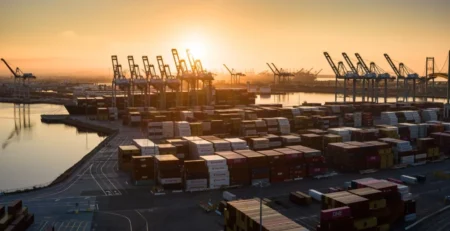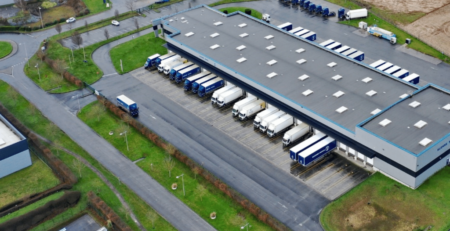From Simulation to Transformation: How Digital Twins Are Revolutionizing Logistics

By Eva Richardson | The Logistic News
April 8, 2025
In the fast-paced world of logistics, the margin for error is razor-thin—and the demand for speed and accuracy is relentless. To stay ahead, the industry is turning to a powerful digital tool with real-world impact: digital twins. Once confined to high-tech manufacturing and aerospace, digital twin technology is now reshaping logistics from warehouse floors to last-mile delivery.
Digital twins—virtual replicas of physical systems—are enabling logistics operators to simulate, predict, and optimize operations across the entire supply chain. As AI and IoT converge, these dynamic models are becoming essential to streamlining processes, reducing costs, and boosting service reliability.
From Concept to Cargo: What Are Digital Twins?
A digital twin is a real-time virtual representation of a physical asset, process, or system. Connected to sensors, software, and data platforms, it evolves alongside its physical counterpart. In logistics, this means tracking the performance of warehouses, fleets, packages, and even entire networks.
“Digital twins offer visibility that goes beyond dashboards,” said a senior technology strategist at a global logistics firm. “They provide predictive insights, not just historical data.”
Warehouse Optimization in Real-Time
Within warehouses, digital twins replicate layouts, equipment, labor movement, and inventory flows. Logistics managers can test new workflows, assess the impact of staffing changes, and simulate disruptions without touching the physical site. The result? Smoother operations, reduced bottlenecks, and higher throughput.
One multinational 3PL reported a 22% improvement in pick-and-pack efficiency after integrating digital twins into its European fulfillment centers.
Predictive Power for Delivery and Routing
Beyond the warehouse, digital twins are transforming transport. Delivery routes are modeled against real-world traffic, weather, fuel consumption, and driver behavior. If a storm is predicted to hit a distribution corridor, a digital twin can proactively reroute deliveries, update ETAs, and optimize fuel usage—all before the impact is felt on the ground.
Retailers using twin-driven route optimization have reported a 15% reduction in last-mile delivery costs and significantly improved customer satisfaction metrics.
Sustainability and Risk Management
Digital twins also support green logistics. By modeling emissions and energy consumption, companies can simulate greener delivery modes or facility upgrades. They also help anticipate maintenance needs and prevent costly breakdowns, which is vital in temperature-sensitive sectors like pharma and food.
“Being able to simulate different sustainability scenarios without disrupting operations is a game-changer,” said the head of logistics at a major FMCG brand.
Challenges and the Road Ahead
Despite the benefits, adoption is not without hurdles. Data silos, integration costs, and workforce upskilling remain barriers. However, as cloud platforms become more interoperable and AI algorithms more intuitive, the entry barrier is falling.
Market analysts project the global logistics digital twin market will grow by over 30% annually through 2030, as digital-first operations become the norm.
Conclusion: A New Digital Frontier in Logistics
Digital twins are no longer a futuristic concept—they are a strategic imperative. From forecasting disruptions to optimizing every square meter of a warehouse, their ability to bring digital intelligence into physical logistics is unlocking new levels of agility, accuracy, and accountability.
In a world where every delivery counts, digital twins may be the most valuable package logistics can deliver.
For more insights on AI, digital infrastructure, and logistics innovation, follow Eva Richardson and The Logistic News on LinkedIn and Google News.
The post From Simulation to Transformation: How Digital Twins Are Revolutionizing Logistics appeared first on The Logistic News.
Share this post
Related
Posts
Holman Logistics Named Top 100 3PL for Tenth Year Running
By Maria Kalamatas | July 18, 2025 Seattle, July 18 — Holman Logistics has once again secured a place on Inbound...
GXO Logistics to Release Q2 2025 Results Amid Contract Logistics Expansion
By Maria Kalamatas | July 18, 2025 Greenwich, July 18 — GXO Logistics has announced that it will report its second-quarter...
U.S. Port Activity Holds Steady, but Outlook Remains Uncertain, Says ITS Logistics
By Maria Kalamatas | July 18, 2025 Reno, July 18 — Port operations across the United States remained stable in July,...
H.I.G. Realty Acquires Eight Last-Mile Logistics Assets Across France
By Maria Kalamatas | July 18, 2025 Paris, July 18 — U.S.-based investment firm H.I.G. Realty has acquired a portfolio of...





